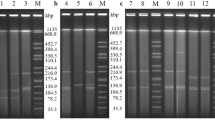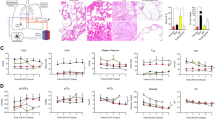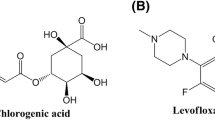Abstract
Injured patients with lung contusion (LC) are at risk of developing bacterial pneumonia (PNA) followed by sepsis and death. A recent genome-wide association study (GWAS) showed FER gene expression positively correlating with survival rates among individuals with above conditions. We sought to determine whether electroporation (EP)-mediated delivery of FER gene could indeed improve survival, in a lethal model of combined LC and PNA. C57BL/6 mice sustained unilateral LC, which preceded a 500 Klebsiella colony forming unit (CFU) inoculation by 6 h. In-between these insults, human FER plasmid (pFER) was introduced into the lungs followed by eight EP pulses applied externally (10 ms at 200 V cm−1). Control groups included EP of empty vector (pcDNA3) or Na+/K+-ATPase genes (pPump) and no treatment (LC+PNA). We recorded survival, histology, lung mechanics, bronchial alveolar lavage (BAL) fluid, FER and inflammatory gene expression and bacteriology. The data show that 7-day survival was significantly improved by pFER compared with control groups. pFER increased BAL monocytes and activated antibacterial response genes (nitric oxide synthase (NOS), Fizz). pFER treatment showed decreased lung and blood Klebsiella counts reaching, in some cases, complete sterilization. In conclusion, FER gene delivery promoted survival in LC+PNA mice via recruitment of activated immune cells, improving efficiency of bacterial clearance within contused lung.
This is a preview of subscription content, access via your institution
Access options
Subscribe to this journal
Receive 6 print issues and online access
$259.00 per year
only $43.17 per issue
Buy this article
- Purchase on SpringerLink
- Instant access to full article PDF
Prices may be subject to local taxes which are calculated during checkout










Similar content being viewed by others
References
Raghavendran K, Davidson BA, Woytash JA, Helinski JD, Marschke CJ, Manderscheid PA et al. The evolution of isolated bilateral lung contusion from blunt chest trauma in rats: cellular and cytokine responses. Shock 2005; 24: 132–138.
Dolgachev VA, Yu B, Reinke JM, Raghavendran K, Hemmila MR . Host susceptibility to gram-negative pneumonia after lung contusion. J Trauma Acute Care Surg 2012; 72: 614–622; discussion 22-23.
Machado-Aranda D, Wang Z, Yu B, Suresh MV, Notter RH, Raghavendran K . Increased phospholipase A2 and lyso-phosphatidylcholine levels are associated with surfactant dysfunction in lung contusion injury in mice. Surgery 2013; 153: 25–35.
Suresh MV, Ramakrishnan SK, Thomas B, Machado-Aranda D, Bi Y, Talarico N et al. Activation of hypoxia-inducible factor-1alpha in type 2 alveolar epithelial cell is a major driver of acute inflammation following lung contusion. Crit Care Med 2014; 42: e642–e653.
Machado-Aranda D, V Suresh M, Yu B, Dolgachev V, Hemmila MR, Raghavendran K . Alveolar macrophage depletion increases the severity of acute inflammation following nonlethal unilateral lung contusion in mice. J Trauma Acute Care Surg 2014; 76: 982–990.
Rubenfeld GD, Caldwell E, Peabody E, Weaver J, Martin DP, Neff M et al. Incidence and outcomes of acute lung injury. N Engl J Med 2005; 353: 1685–1693.
Villar J, Sulemanji D, Kacmarek RM . The acute respiratory distress syndrome: incidence and mortality, has it changed? Curr Opin Crit Care 2014; 20: 3–9.
Battle CE, Hutchings H, Evans PA . Risk factors that predict mortality in patients with blunt chest wall trauma: a systematic review and meta-analysis. Injury 2012; 43: 8–17.
Taylor AP . Serious putty. The Scientist 2016; 2016: 15–16.
Hidron AI, Edwards JR, Patel J, Horan TC, Sievert DM, Pollock DA et al. NHSN annual update: antimicrobial-resistant pathogens associated with healthcare-associated infections: annual summary of data reported to the National Healthcare Safety Network at the Centers for Disease Control and Prevention, 2006-2007. Infect Control Hosp Epidemiol 2008; 29: 996–1011.
Rautanen A, Mills TC, Gordon AC, Hutton P, Steffens M, Nuamah R et al. Genome-wide association study of survival from sepsis due to pneumonia: an observational cohort study. Lancet Respir Med 2015; 3: 53–60.
Hao QL, Ferris DK, White G, Heisterkamp N, Groffen J . Nuclear and cytoplasmic location of the FER tyrosine kinase. Mol Cell Biol 1991; 11: 1180–1183.
Senis YA, Sangrar W, Zirngibl RA, Craig AW, Lee DH, Greer PA . Fps/Fes and Fer non-receptor protein-tyrosine kinases regulate collagen- and ADP-induced platelet aggregation. J Thromb Haemost 2003; 1: 1062–1070.
Sangrar W, Gao Y, Bates B, Zirngibl R, Greer PA . Activated Fps/Fes tyrosine kinase regulates erythroid differentiation and survival. Exp Hematol 2004; 32: 935–945.
Sangrar W, Gao Y, Scott M, Truesdell P, Greer PA . Fer-mediated cortactin phosphorylation is associated with efficient fibroblast migration and is dependent on reactive oxygen species generation during integrin-mediated cell adhesion. Mol Cell Biol 2007; 27: 6140–6152.
Kwok E, Everingham S, Zhang S, Greer PA, Allingham JS, Craig AW . FES kinase promotes mast cell recruitment to mammary tumors via the stem cell factor/KIT receptor signaling axis. Mol Cancer Res 2012; 10: 881–891.
Ahn J, Truesdell P, Meens J, Kadish C, Yang X, Boag AH et al. Fer protein-tyrosine kinase promotes lung adenocarcinoma cell invasion and tumor metastasis. Mol Cancer Res 2013; 11: 952–963.
Sangrar W, Shi C, Mullins G, LeBrun D, Ingalls B, Greer PA . Amplified Ras-MAPK signal states correlate with accelerated EGFR internalization, cytostasis and delayed HER2 tumor onset in Fer-deficient model systems. Oncogene 2015; 34: 4109–4117.
Rocha J, Zouanat FZ, Zoubeidi A, Hamel L, Benidir T, Scarlata E et al. The Fer tyrosine kinase acts as a downstream interleukin-6 effector of androgen receptor activation in prostate cancer. Mol Cell Endocrinol 2013; 381: 140–149.
Kawakami M, Morita S, Sunohara M, Amano Y, Ishikawa R, Watanabe K et al. FER overexpression is associated with poor postoperative prognosis and cancer-cell survival in non-small cell lung cancer. Int J Clin Exp Pathol 2013; 6: 598–612.
Lin X, Dean DA . Gene therapy for ALI/ARDS. Crit Care Clin 2011; 27: 705–718.
Machado-Aranda D, Adir Y, Young JL, Briva A, Budinger GR, Yeldandi AV et al. Gene transfer of the Na+,K+-ATPase beta1 subunit using electroporation increases lung liquid clearance. Am J Respir Crit Care Med 2005; 171: 204–211.
Machado-Aranda DA, Suresh MV, Yu B, Raghavendran K . Electroporation-mediated in vivo gene delivery of the Na(+)/K(+)-ATPase pump reduced lung injury in a mouse model of lung contusion. J Trauma Acute Care Surg 2012; 72: 32–39; discussion 9–40.
Weiss DJ . Delivery of gene transfer vectors to lung: obstacles and the role of adjunct techniques for airway administration. Mol Ther 2002; 6: 148–152.
Somiari S, Glasspool-Malone J, Drabick JJ, Gilbert RA, Heller R, Jaroszeski MJ et al. Theory and in vivo application of electroporative gene delivery. Mol Ther 2000; 2: 178–187.
Mir LM . Electroporation-based gene therapy: recent evolution in the mechanism description and technology developments. Methods Mol Biol 2014; 1121: 3–23.
Dean DA, Machado-Aranda D, Blair-Parks K, Yeldandi AV, Young JL . Electroporation as a method for high-level nonviral gene transfer to the lung. Gene Ther 2003; 10: 1608–1615.
Mutlu GM, Machado-Aranda D, Norton JE, Bellmeyer A, Urich D, Zhou R et al. Electroporation-mediated gene transfer of the Na+,K+ -ATPase rescues endotoxin-induced lung injury. Am J Respir Crit Care Med 2007; 176: 582–590.
Machado-Aranda DA, Suresh MV, Yu B, Raghavendran K . Electroporation-mediated in vivo gene delivery of the Na+/K+-ATPase pump reduced lung injury in a mouse model of lung contusion. J Trauma Acute Care Surg 2012; 72: 32–39; discussion 9–40.
Matute-Bello G, Downey G, Moore BB, Groshong SD, Matthay MA, Slutsky AS et al. An official American Thoracic Society workshop report: features and measurements of experimental acute lung injury in animals. Am J Respir Cell Mol Biol 2011; 44: 725–738.
Amato MB, Meade MO, Slutsky AS, Brochard L, Costa EL, Schoenfeld DA et al. Driving pressure and survival in the acute respiratory distress syndrome. N Engl J Med 2015; 372: 747–755.
Raghavendran K, Notter RH, Davidson BA, Helinski JD, Kunkel SL, Knight PR . Lung contusion: inflammatory mechanisms and interaction with other injuries. Shock 2009; 32: 122–130.
Zisman DA, Kunkel SL, Strieter RM, Tsai WC, Bucknell K, Wilkowski J et al. MCP-1 protects mice in lethal endotoxemia. J Clin Invest 1997; 99: 2832–2836.
Raghavendran K, Davidson BA, Mullan BA, Hutson AD, Russo TA, Manderscheid PA et al. Acid and particulate-induced aspiration lung injury in mice: importance of MCP-1. Am J Physiol Lung Cell Mol Physiol 2005; 289: L134–L143.
Suresh MV, Yu B, Machado-Aranda D, Bender MD, Ochoa-Frongia L, Helinski JD et al. Role of macrophage chemoattractant protein 1 in acute inflammation following lung contusion. Am J Respir Cell Mol Biol 2012; 46: 797–806.
Neumann E, Schaefer-Ridder M, Wang Y, Hofschneider PH . Gene transfer into mouse lyoma cells by electroporation in high electric fields. EMBO J 1982; 1: 841–845.
Emr BM, Roy S, Kollisch-Singule M, Gatto LA, Barravecchia M, Lin X et al. Electroporation-mediated gene delivery of Na+,K+ -ATPase, and ENaC subunits to the lung attenuates acute respiratory distress syndrome in a two-hit porcine model. Shock 2015; 43: 16–23.
Dean DA, Ramanathan T, Machado D, Sundararajan R . Electrical impedance spectroscopy study of biological tissues. J Electrostat 2008; 66: 165–177.
Calautti E, Cabodi S, Stein PL, Hatzfeld M, Kedersha N, Paolo Dotto G . Tyrosine phosphorylation and src family kinases control keratinocyte cell-cell adhesion. J Cell Biol 1998; 141: 1449–1465.
Kim L, Wong TW . Growth factor-dependent phosphorylation of the actin-binding protein cortactin is mediated by the cytoplasmic tyrosine kinase FER. J Biol Chem 1998; 273: 23542–23548.
Kim J, Ogata Y, Feldman RA . Fes tyrosine kinase promotes survival and terminal granulocyte differentiation of factor-dependent myeloid progenitors (32D) and activates lineage-specific transcription factors. J Biol Chem 2003; 278: 14978–14984.
Qi W, Ebbert KV, Craig AW, Greer PA, McCafferty DM . Absence of Fer protein tyrosine kinase exacerbates endotoxin induced intestinal epithelial barrier dysfunction in vivo. Gut 2005; 54: 1091–1097.
Oh MA, Choi S, Lee MJ, Choi MC, Lee SA, Ko W et al. Specific tyrosine phosphorylation of focal adhesion kinase mediated by Fer tyrosine kinase in suspended hepatocytes. Biochim Biophys Acta 2009; 1793: 781–791.
Putzke AP, Rothman JH . Repression of Wnt signaling by a Fer-type nonreceptor tyrosine kinase. Proc Natl Acad Sci USA 2010; 107: 16154–16159.
Khajah M, Andonegui G, Chan R, Craig AW, Greer PA, McCafferty DM . Fer kinase limits neutrophil chemotaxis toward end target chemoattractants. J Immunol 2013; 190: 2208–2216.
Craig AW, Greer PA . Fer kinase is required for sustained p38 kinase activation and maximal chemotaxis of activated mast cells. Mol Cell Biol 2002; 22: 6363–6374.
Xu G, Craig AW, Greer P, Miller M, Anastasiadis PZ, Lilien J et al. Continuous association of cadherin with beta-catenin requires the non-receptor tyrosine-kinase Fer. J Cell Sci 2004; 117 (Pt 15): 3207–3219.
McCafferty DM, Craig AW, Senis YA, Greer PA . Absence of Fer protein-tyrosine kinase exacerbates leukocyte recruitment in response to endotoxin. J Immunol 2002; 168: 4930–4935.
Zirngibl RA, Senis Y, Greer PA . Enhanced endotoxin sensitivity in fps/fes-null mice with minimal defects in hematopoietic homeostasis. Mol Cell Biol 2002; 22: 2472–2486.
Vacik J, Dean BS, Zimmer WE, Dean DA . Cell-specific nuclear import of plasmid DNA. Gene Ther 1999; 6: 1006–1014.
Young JL, Dean DA . Electroporation-mediated gene delivery. Adv Genet 2015; 89: 49–88.
Hoth JJ, Hudson WP, Brownlee NA, Yoza BK, Hiltbold EM, Meredith JW et al. Toll-like receptor 2 participates in the response to lung injury in a murine model of pulmonary contusion. Shock 2007; 28: 447–452.
Suresh MV, Yu B, Machado-Aranda D, Bender MD, Ochoa-Frongia L, Helinski JD et al. Role of macrophage chemoattractant protein-1 in acute inflammation after lung contusion. Am J Respir Cell Mol Biol 2012; 46: 797–806.
Hao QL, Heisterkamp N, Groffen J . Isolation and sequence analysis of a novel human tyrosine kinase gene. Mol Cell Biol 1989; 9: 1587–1593.
Taddonio MA, Dolgachev V, Bosmann M, Ward PA, Su G, Wang SC et al. Influence of lipopolysaccharide-binding protein on pulmonary inflammation in gram-negative pneumonia. Shock 2015; 43: 612–619.
Dolgachev VA, Yu B, Sun L, Shanley TP, Raghavendran K, Hemmila MR . Interleukin 10 overexpression alters survival in the setting of gram-negative pneumonia following lung contusion. Shock 2014; 41: 301–310.
Dolgachev V, Thomas M, Berlin A, Lukacs NW . Stem cell factor-mediated activation pathways promote murine eosinophil CCL6 production and survival. J Leukoc Biol 2007; 81: 1111–1119.
Dolgachev V, Farooqui MS, Kulaeva OI, Tainsky MA, Nagy B, Hanada K et al. De novo ceramide accumulation due to inhibition of its conversion to complex sphingolipids in apoptotic photosensitized cells. J Biol Chem 2004; 279: 23238–23249.
Ding L, Dolgachev V, Wu Z, Liu T, Nakashima T, Wu Z et al. Essential role of stem cell factor-c-Kit signalling pathway in bleomycin-induced pulmonary fibrosis. J Pathol 2013; 230: 205–214.
Acknowledgements
We gratefully acknowledge the support of National Institutes of Health-R01HL102013 (KR). We thank Dr. JE Wilkinson (Department of Pathology/ULAM, University of Michigan Medical School) for the help with lung tissue histology scorings. We also thank Ms. Lane Kelley McCandless for her contribution in revising this manuscript.
Author contributions
VAD, RHG, MVS, BT, NT and DMA conducted experiments and wrote the manuscript. DMA, MRH, KR contributed to conceptual design, interpretation of data and critical review.
Author information
Authors and Affiliations
Corresponding author
Ethics declarations
Competing interests
The authors declare no conflict of interest.
Rights and permissions
About this article
Cite this article
Dolgachev, V., Goldberg, R., Suresh, M. et al. Electroporation-mediated delivery of the FER gene in the resolution of trauma-related fatal pneumonia. Gene Ther 23, 785–796 (2016). https://doi.org/10.1038/gt.2016.58
Received:
Revised:
Accepted:
Published:
Issue date:
DOI: https://doi.org/10.1038/gt.2016.58
This article is cited by
-
Electroporation-mediated delivery of FER gene enhances innate immune response and improves survival in a murine model of pneumonia
Gene Therapy (2018)
-
The FER rs4957796 TT genotype is associated with unfavorable 90-day survival in Caucasian patients with severe ARDS due to pneumonia
Scientific Reports (2017)



